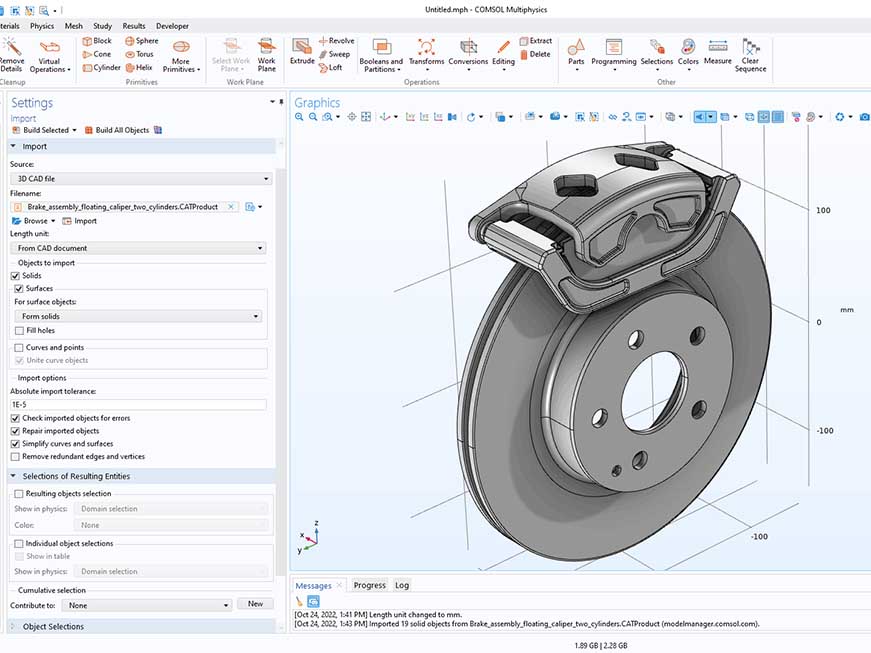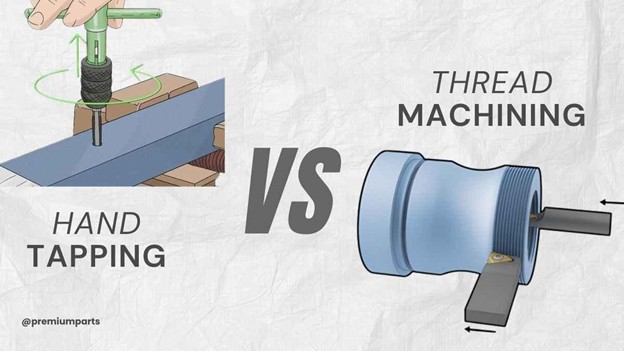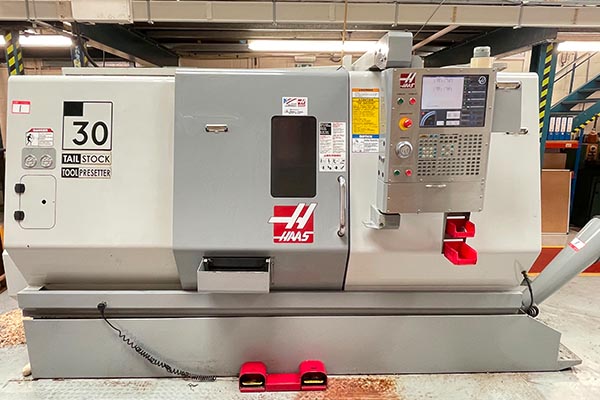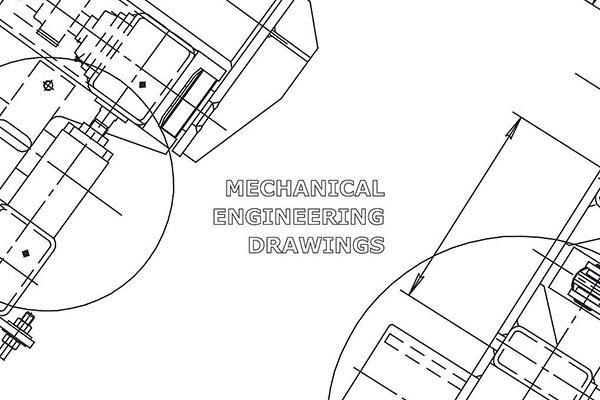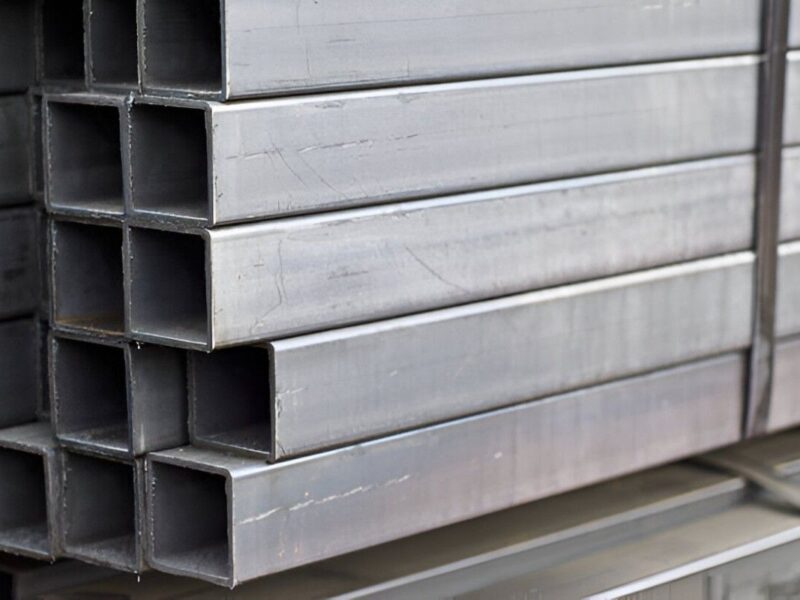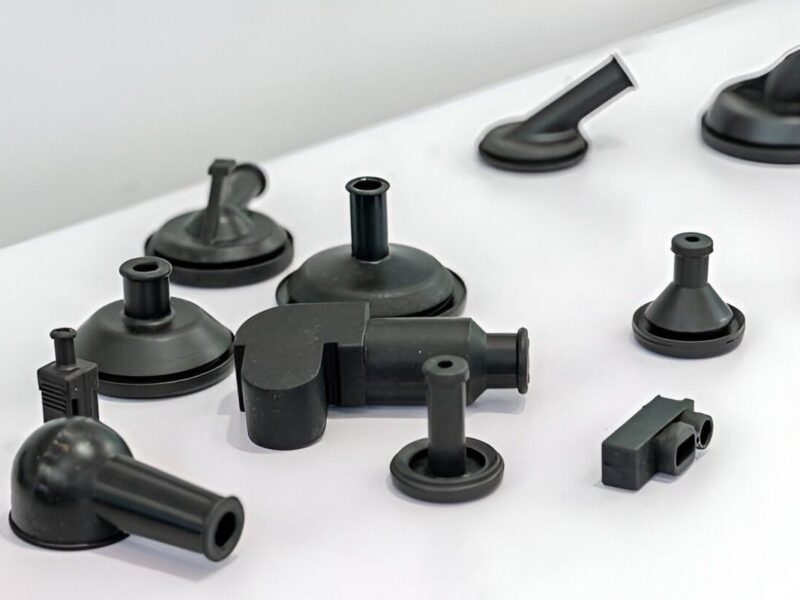Delrin and acetal are polyoxymethylene (POM) plastics that serve different purposes in CNC machining. Delrin® is regarded as a homopolymer, whereas general-purpose acetal materials act as copolymers. Both materials have equally impressive mechanical properties but are best employed in distinct settings. Acetal is optimal for continuous temperature environments compared to Delrin and, as such, is ideal for specific CNC applications. In comparison, Delrin® is most suitable for projects with applications of cyclic loads due to its enhanced tensile characteristics and stiffness. Knowledge of these differences is crucial when selecting an appropriate material for CNC prototype projects that require low coefficients of friction, high tensile strength, and structural integrity.
This article gives you a brief overview of these materials to help you choose when undertaking machining processes.
What Is Acetal/POM Plastic?

Acetal Plastic In Raw Form
Image Description: An image of raw acetal plastic. It shows small, smooth pellets and sheets, usually white or off-white. The image showcases the material in its raw, unprocessed form, ready for machining or extrusion.
Chemical Formula: C6H14O2
Acetal, also identified as polyoxymethylene (POM). It is a semi-crystalline thermoplastic. Acetal mainly exists in the form of a homopolymer and a copolymer. The term acetal is more often used to describe the copolymer type of this material. In this variant, CH2O chains contain additional comonomers after 70 to 100 units have been added. Their structure disrupts molecular ordering, leading to decreased material crystallinity.
Characteristics of Acetal
Acetal’s thermal and chemical stability is remarkable. This makes acetal very versatile for machining projects. Key characteristics include:
- Reinforcement Potential: The presence of glass fibers can be incorporated well into acetal copolymers. This coupling process increases the integrated strength and material stiffness.
- Low Friction Properties: Wear resistance is attributed to a low coefficient of friction. This feature makes acetal suitable for applications that require flexibility, such as gears and bearings.
- Chemical Stability: Acetal also demonstrates reasonable resistance to both organic and inorganic solvents. Additionally, acetal copolymers can withstand attacks from acids and alkalis.
- Cost-Effectiveness: In most cases, acetal copolymer is cheaper than Delrin®. This affordability makes it ideal for large-scale production runs.
- Minimal Porosity: Acetal reduces the tendency of the foam to develop voids. This peculiar feature is specifically crucial for the structural integrity of the precision-machined components.
- Resistance to Hot Water: Acetal products are typically resistant to high thermal conditions. This quality helps to achieve dimensional stability during thermal loading.
- High continuous service temperature: The copolymers also do not undergo substantial mechanical degradation at peak temperatures. The intended trait enables them to work well within adverse conditions. Moreover, acetal can work under pressure conditions.
- Applications: Examples of acetal applications are gears, bushings, and structural parts. These characteristics make acetal an ideal choice for automobile and consumer product applications.
Types of Acetal

Acetal Copolymer
Image Description: An image of acetal copolymer. It shows a smooth, rigid plastic acetal copolymer, often in the form of sheets, tubes, and sheets with a slightly glossy finish.
Acetal materials primarily fall into two categories: The copolymer acetal is known as partially crystalline POM-C, while the homopolymer acetal is referred to as fully crystalline POM-H.
Copolymers contain different monomers in the chain structure of the repeating CH₂O. These materials exhibit excellent dimensional stability, as well as chemical and abrasion resistance. These are widely employed in injection molding, machining, CNC milling, and CNC turning. Typically, they are available in black, blue, and red colours. Examples are Celcon®, Duracon®, and Hostaform®.
Homopolymer acetal, better known under the trademark Delrin®, possesses a relatively simple structure consisting of only CH₂O units. Certain acetals are known to exhibit both homopolymer and copolymer characteristics; examples include Acetron and Sustarin.
Components Made from Acetal

Acetal Machined Part
Image Description: An image of a detailed machined acetal part. It showcases intricate cuts, precise holes, and finely milled surfaces with a smooth, polished finish.
Many sectors utilize acetal polymers; for instance, the automotive and consumer electronics industries heavily consume acetal for fabricating precision plastic components. Here are some common uses:
- Gears
- Pulleys
- Bushings
- Bearings
- Roller Guides
- Housings
- Clips
- Cam Followers
- Flow Meters
- Cable Management Systems
What Is Delrin®?
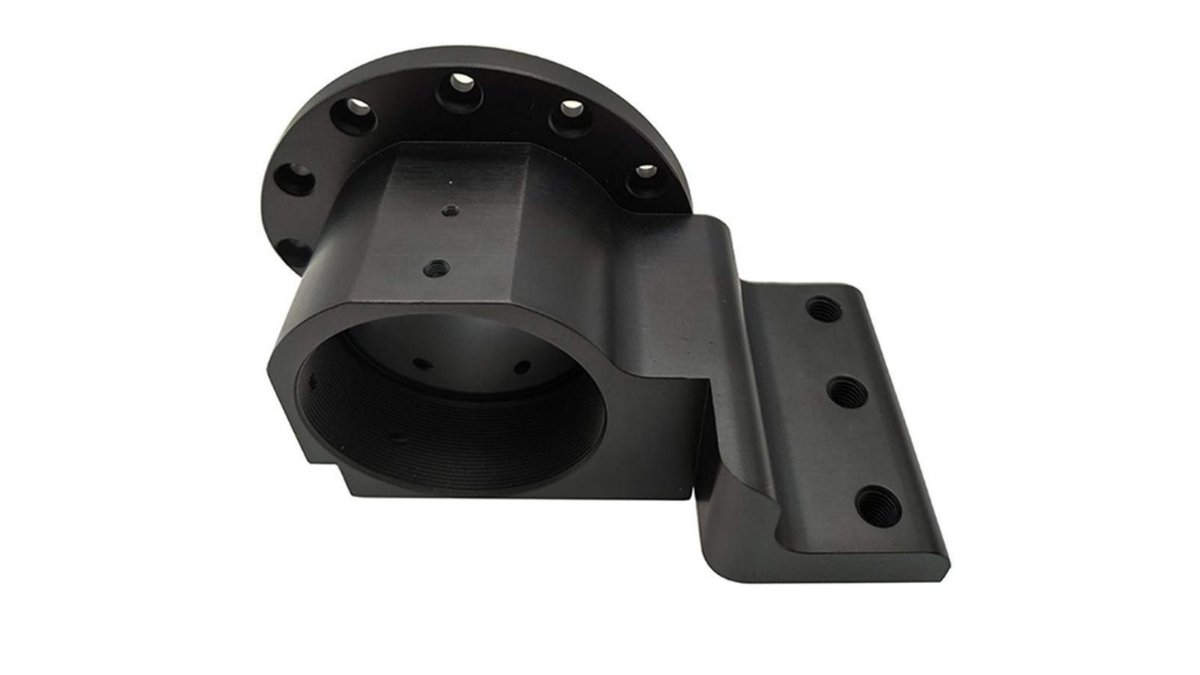
Delrin CNC Machining
Image Description: An image of a detailed machined Delrin product. It showcases intricate features, precise holes, and smooth, polished surfaces with sharp edges.
Chemical Formula: (CH2O)n.
Delrin® is a type of semicrystalline POM-homopolymer originated by DuPont Company. Delrin is praised for its strength and rigidity. It’s among the strongest unreinforced polymers available in today’s contemporary market. In geometry, a homopolymer has a regular structure of the backbone, consisting solely of CH₂O groups. A uniform molecular structure, as shown above, permits the formation of larger crystalline structures than other POMs. Different types of Delrin® are available, compounded with fillers such as glass fiber or PTFE.
Characteristics of Delrin®
 Delrin Sheet & Rods
Delrin Sheet & Rods
Image Description: An image of raw Delrin sheets and rods. It shows solid, smooth plastic pieces in a variety of sizes, typically in black or white.
Delrin® is used as an engineering-grade plastic, which has an adorable, sleek appearance and is highly strong. Key properties include:
- Easy to Mold: Delrin® in its liquid form has good flow characteristics and easily fills molds.
- Crystalline Structure: High crystallinity, in turn, provides excellent mechanical properties, including stiffness and resilience.
- High Yield Strain: Highly elastic, with minimal residual deformation; it is suitable for snap-fit applications.
- High Toughness: Retains good tensile strength over a temperature zone of -40°C to 90°C.
- Thermal Resistance: Resistant to occasional temperatures up to 120 °C, but for a short period.
- Fatigue Strength: Intended for application in conditions of constant cyclic loading, showing very good fatigue characteristics.
Delrin Grades Ideal For Machining
Delrin has many variants. All the grades serve their respective purposes efficiently.
- Delrin 150: This grade offers excellent mechanical stiffness. High-temperature resistance reduces warpage and, therefore, the reliability of the board in high-temperature conditions.
- Delrin AF 100 (13% PTFE-filled): Delrin AF 100 is typically augmented with PTFE, enhancing its reliability by increasing lubricity. Such an alteration improves the material’s overall toughening capabilities.
- Delrin (30% Glass Filled): This variant is more resistant to impacts than the others. Therefore, it is notably considered for high-stress applications. They are designed with structural elements to ensure durability and long-lasting performance in machined parts and products.
- Delrin AF DE588: Delrin DE588, Contains 20% PTFE fibers. Very popular in military use, it is best suited for the production of parts for submarines.
Components Manufactured Through CNC Machining of Delrin
Delrin® is an exceptional material facilitating mechanical properties, especially high strength-to-weight ratio, high impact strength, and fatigue resistance. Below are some common applications:
- Guide Rods
- Flow Control Valves
- Fixture Bases
- Standoff Spacers
- Wear Strips
- Locking Mechanisms
- Roller Blocks
- Pump Components
- Chain Tensioners
- Tool Holders
Comparing Acetal and Delrin®
Copolymer acetal and homopolymer POM (Delrin®) are broadly differentiated in terms of molecular composition. Delrin® has a very close and ordered structure of crystalline. The strength of POM/Acetal depends to a large extent on the molecular chain bonds in crystalline areas of the material. Stresses within these crystalline zones are more rigid than those in the surrounding regions. Thus, the material’s strength relies on the inter-region bonds. Under load, these inter-region chains elongate and could even scission from the adjacent crystalline regions. These strengths are attributed to the improved inter-regional bonding, which leads to strength improvements.
Delrin has many crystalline areas, which increase the number of intermolecular bonds in the polymer. The deformation and fracture of the material are attributed to its well-ordered crystalline structure that imparts high strength to the material.
Table: Key Differences Between Acetal and Delrin®
| Property | Acetal | Delrin® |
| Chemical Resistance | Resistant to many solvents and acids. | Less effective against acids and bases. |
| Processing Flexibility | Offers a broader processing temperature range. | Requires precise temperature control. |
| Effect of Reinforcing Additives | Glass-filled versions enhance mechanical properties. | Additives act as fillers, increasing stiffness. |
| Temperature Resistance | Superior long-term temperature stability. | Degrades under prolonged high temperatures. |
| Mechanical Properties | Performs adequately under elevated temperatures. | Exhibits high fatigue resistance and creep resistance. |
| Machining Techniques | Suitable for CNC machining, injection molding, routing, and laser cutting. | Ideal for CNC machining, precision milling, turning, and grinding. |
| Tolerance | Tolerances of ±0.005 inches are common. | Tolerances of ±0.001 inches are achievable in parts. |
Comparing Acetal Vs. Delrin® Based on Key Properties
Although acetal copolymers and Delrin resemble each other in many aspects, they are different from each other. The following are the major points of comparison between these materials.
Acetal Vs Delrin: Composition
Delrin is a homopolymer with a repeating structural unit. While acetal(copolymer) has monomers that usually interrupt regularity at every 70-100 monomer units. Closely associated with this distinction is the impact on the crystalline structure of each material.
Acetal vs Delrin: Hardness
Delrin has a hardness of 86 Shore-D. In comparison, acetal copolymers exhibit a hardness of 85 Shore-D. As a result, Delrin can withstand high impact and resist abrasion compared to acetal (POM).
Acetal Vs Delrin: Chemical Resistance
Acetal copolymers are highly resistant to concentrated caustic solutions. They are superior to Delrin in high ph conditions and, therefore, are suitable for particular uses. Delrin parts can resist fungi and insects, preventing deformations in machined parts.
Acetal Vs Delrin: Temperature Tolerance
Delrin’s operating temperature range is from -40 °C to 120 °C. The machined parts of Delrin are ideal for low-thermal conditions. In contrast, acetal copolymers can operate up to 100°c, with occasional spikes of up to 140°c.
Acetal Vs Delrin: Flexural and Tensile Strength
While comparing flexural yield and tensile strength, Delrin has better values. Delrin has a yield strength of 11,000 psi and a tensile strength of 13,000 psi. In comparison, acetal has a yield strength of 9,500 psi and a tensile strength of 12,000 psi.
Acetal Vs Delrin: Porosity
The structure of Delrin consists of a lower density that accommodates tiny voids. This characteristic may allow the penetration of gas and liquids. On the other side, POM is non-porous and, therefore, fit for use in food and medical applications.
Acetal Vs Delrin: Application
Both materials have diverse applications in contemporary fields. Delrin is utilized in applications demanding rigid POM, whereas acetal is preferred for its chemical resistance. Nonetheless, its uses are in gears, bearings, and insulators in various industries.
Acetal Vs Delrin: Cost
Acetal copolymers are relatively economical and typically cost around $1,500- $ 2,500 per ton. Delrin is comparatively expensive because it possesses superior mechanical properties and a well-established brand image.
Acetal vs. Delrin: Which Material Fits Your Needs?
The practical difference between using acetal and Delrin will dictate the choice between the two. Here’s a roadmap for optimal decision-making between acetal vs. Delrin for rapid manufacturing. Let’s get into it.
Heavy Loads
Delrin is perfect for parts subjected to constantly heavy loads. Moreover, it features favourable tensile and yield stress. Therefore, it can withstand considerable stress for an extended period.
Friction
The coefficient of friction in Delrin is relatively lower than in acetal. This characteristic makes it preferable in parts where a sliding motion is required. Typically, Delrin applications do not require lubrication.
Dimensional Stability and Weight
Specifically for applications that require dimensional stability and lightweight components, acetal copolymers are recommended. The crystalline structure provides stability, while the disordered polymer structure helps maintain dimensions.
Temperature and Flammability
Neither material should be used in applications that involve temperatures over 90°C. Furthermore, it is unwise to expose the product to water with a temperature exceeding 60 °C for an extended period. Delrin and acetal break away under heat and ignite; thus, they should not meet high flammability standards.
Is Delrin Identical to Acetal in CNC Machining?
Delrin and acetal are distinct materials in CNC machining contexts. Regarding CNC machining, attention is paid to the comparison between acetal copolymer and Delrin. The presence of further substituted monomers influences the machinability of acetal copolymer in addition to the CH2O units. It’s worth noting that both materials belong to the same group but are worn differently. Hence Delrin has an outstanding tensile strength and is best suited for CNC applications. Its thinner cross-section makes it better for machining lightweight parts.
Premium Parts: Get Affordable Solutions for Plastic Manufacturing
Do you need services for outsourcing your plastic fabrication? PremiumParts provides injection molding, CNC machining, and 3D printing services, focusing on high-quality parts. As an ISO 9001: A-2015 accredited provider, we employ cutting-edge technology to offer affordable solutions.
Our Engineers meticulously review your Design for Manufacture (DFM) and advise you on selecting the appropriate technique for ensuring success in fabrication projects. You can simply scale up or down product quantities, its components, and even the surface finishes to accommodate your particular project needs.
Try Premium Parts Today! Submit your CAD design today and get an instant quote and a detailed DfM report in less than 12 hours for your CNC prototype project!
FAQs – Acetal Vs Delrin
Q1. What Is POM Plastic?
POM plastics are most frequently used in CNC machining because they are easy to work with and resistant to heat. Though they become flexible at high temperatures, the materials are sufficiently crystalline to give dependable performance during processing. So, POM is suitable for shaping accurate parts required to meet exact measurements.
Q2. Is Delrin stronger than Nylon?
In terms of strength, nylon is preferred over Delrin. Extruded nylon has a tensile strength of 12,400 PSI, and cast nylon exhibits 13,500 PSI of tensile strength. It is worth emphasizing that both Delrin and nylon are widely used in bearings, gaskets, gears, rollers, and washers, regardless of the strength difference.
Q3. What Is the Toughest Plastic on the Market?
Polycarbonate is considered the toughest. It’s 200 times stronger than glass and provides very good impact properties. Their strength makes it optimal for structural components and is more often used together with Delrin.




